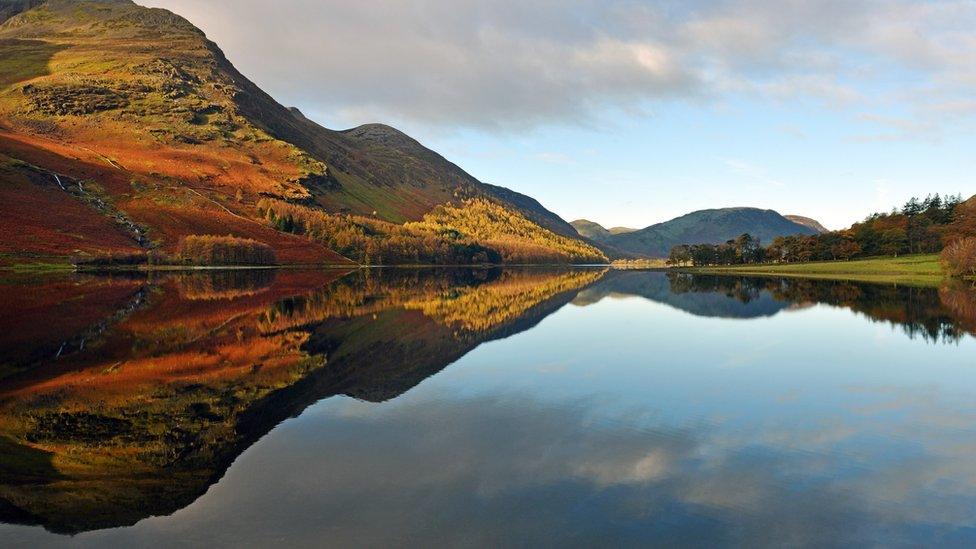What is a Unesco World Heritage site?
- Published

The Lake District in the north-west of England was recently given the special title because of its beauty, its farming and the inspiration it gives to artists and writers
Not too long ago, the Lake District in the north-west of England was given the title of a Unesco World Heritage Site.
Currently, the UK (and its overseas territories) has 31 Unesco-listed sites.
But what exactly does it take to become a World Heritage site?
What's the big deal?
The Jodrell Bank Observatory in the north-west of England was recently chosen as the UK's latest candidate to be given World Heritage status. The observatory is most famous for its Lovell Telescope (pictured here), which was completed in 1957
As a World Heritage Site, a place will become more famous so lots of people will visit it and learn about it.
It can get more money to help look after it so that people can enjoy the site for many years to come.
There are over 1,000 World Heritage Sites around the world, with more still being added to list.
In 1986, Stonehenge was one of the very first sites in the UK to get onto the World Heritage list
How does a place get chosen to be a World Heritage Site?
There's a list of rules that a place should follow for it to become a World Heritage Site.
One of these is that a place must have an interesting story that shows how important it was in history.
For example, the Grand Canyon in Arizona, US tells us a lot about the history of the Earth and how it has developed over millions of years.
Another reason a place could become a World Heritage Site is if it is exceptionally beautiful, such as the Taj Mahal in India, which is famous for its amazing architecture.
A more unusual and less famous site is the Fagus shoe factory in Germany. It may not be as pretty as the Grand Canyon or the Taj Mahal, but it is important in the history of art and architecture so is a World Heritage Site as a result.
This is a model of the famous shoe factory.
Can you lose it?
Yes, some places have been warned that if they don't look after their site properly, they could lose the World Heritage Site status.
One of these place is Liverpool. It's beautiful and historic waterfront was given Heritage status in 2004.
But some experts have warned that plans for new modern buildings to be used as homes and offices there could change the way it looks so much that Unesco change their mind.
The Unesco World Heritage site features the buildings known as the Three Graces
Liverpool says it wants to work with Unesco to find a compromise.
And not all old sites can say they are World Heritage Site.
St Paul's Cathedral isn't a world Heritage Site.
For example, St Paul's Cathedral in London has no status, but the Tower of London does.
- Published8 July 2019
- Published19 April 2016
- Published6 January 2017
